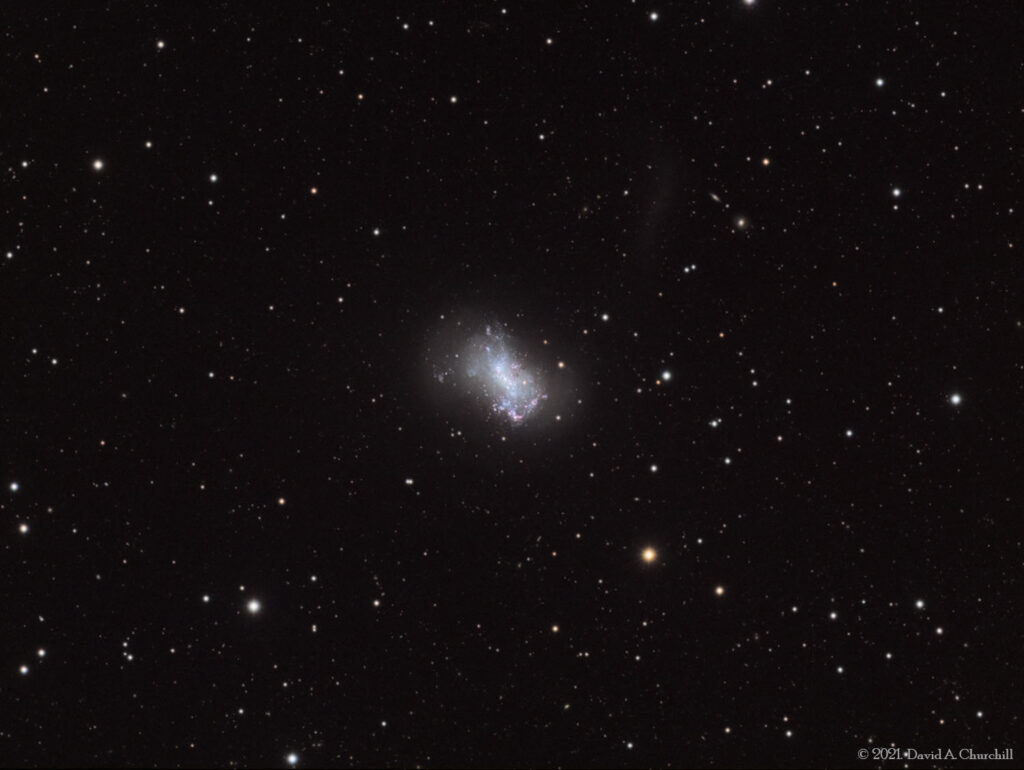NGC 4449 (Caldwell 21)
Irregular Galaxy, Canes Venatici
- Description
- Technical
- Links
NGC 4449, also known as Caldwell 21, is an irregular Magellanic type galaxy in the constellation Canes Venatici, being located about 12 million light-years away. It is part of the M94 Group or Canes Venatici I Group that is relatively close to the Local Group hosting our Milky Way galaxy. This galaxy is similar in nature to the Milky Way’s satellite galaxy, the Large Magellanic Cloud (LMC), though is not as bright nor as large. NGC 4449 has a general bar shape, also characteristic of the LMC, with scattered young blue star clusters.
Unlike the Large Magellanic Cloud, however, NGC 4449 is considered a starburst galaxy due to its high rate of star formation (twice the one of the LMC) and includes several massive and young star clusters, one of them in the galaxy’s center.
NGC 4449 is surrounded by a large envelope of neutral hydrogen that extends over an area of 75 arc minutes (14 times larger than the optical diameter of the galaxy). The envelope shows distortions and irregularities likely caused by interactions with nearby galaxies.
Interactions with nearby galaxies are thought to have influenced star formation in NGC 4449 and, in fact, in 2012 two small galaxies have been discovered interacting with this galaxy: a very low surface brightness disrupted dwarf spheroidal with the same stellar mass as NGC 4449’s halo but with a ratio of dark matter to stellar matter between 5 and 10 times that of NGC 4449 and a highly flattened globular cluster with two tails of young stars that may be the nucleus of a gas-rich galaxy. Both satellites have apparently been disrupted by NGC 4449 and are now being absorbed by it.
Telescope: Astro Physics 175EDF f8.3
Mount: Astro Physics 3600GTO “El Capitan”
Camera: SBIG STT8300
Guider: Mini Borg 50 / SBIG STi
L: 48×10 mins = 480 mins, R: 24×10 mins = 240 mins, G: 24×10 mins = 240 mins, B: 24×10 mins = 240 mins
Total Imaging Time: 20h 00m
Data Imaged remotely over 8 nights during March & April 2021.
Data acquisition & Processing by David Churchill.
None

